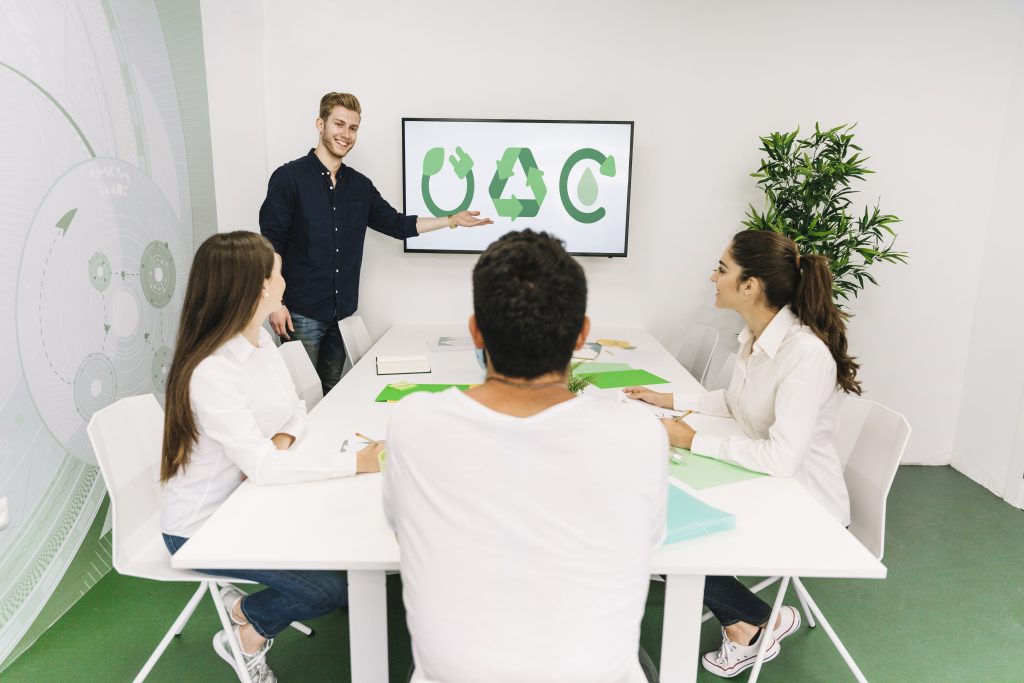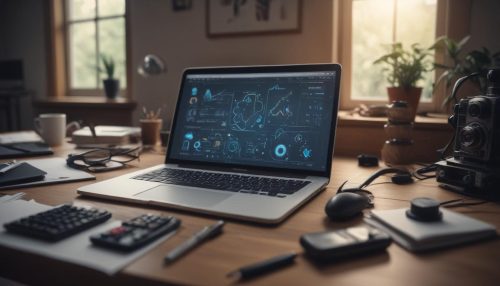What Makes a Digital Workflow Sustainable
Brian Taylor July 7, 2025
In today’s fast-moving tech world, digital workflows have become the backbone of how teams collaborate, create, and deliver. But speed alone is no longer enough. A sustainable digital workflow is now essential—not just for keeping up, but for ensuring long-term success.
This shift isn’t about limiting progress. Instead, it’s about building smarter systems that can adapt, scale, and support real human needs—without breaking under pressure.

What Does “Sustainable” Really Mean in a Digital Workflow?
Sustainability, in this context, isn’t only about energy use or carbon impact. While those factors matter, a sustainable digital workflow is primarily one that is:
- Consistent over time
- Adaptable to change
- Efficient in design
- Friendly to both users and collaborators
- Documented and transparent
Rather than relying on temporary fixes or overcomplex software stacks, sustainable workflows evolve with the team—not against it.
Why Sustainability in Workflows Matters Now
More tools, more platforms, and more channels don’t always equal better outcomes. According to Microsoft’s 2023 Work Trend Index, nearly 70% of workers feel they lack sufficient uninterrupted time to focus. Additionally, many digital professionals report using five or more tools per day just to keep up with communication.
These stats point to a growing issue: fragmentation. As systems grow more complicated, the risk of burnout, inefficiency, and duplicated work increases. That’s why building workflows that reduce noise—rather than add to it—is becoming a strategic necessity.
Key Characteristics of a Sustainable Digital Workflow
Designing something sustainable doesn’t mean doing less. It means focusing more clearly on what matters. Here are five qualities that sustainable workflows share.
1. The Right Tool for the Right Task
Rather than adopting every new platform, sustainable teams focus on tool-process alignment. They choose tools that support how their teams already work—not ones that require a full behavior shift.
For example, a documentation-heavy team may thrive with Notion or Confluence. Meanwhile, fast-moving development squads often prefer GitHub or Linear for clarity and speed. When tools fit the task, teams waste less time switching between platforms or adapting to forced processes.
2. Clear Roles and Responsibility
Sustainable workflows reduce ambiguity. Everyone knows what they’re responsible for, where updates should go, and how decisions get made.
In asynchronous environments especially, clearly defined ownership helps avoid bottlenecks and miscommunication. Instead of relying on constant check-ins, tasks move forward because expectations are already clear.
Moreover, having this clarity builds trust—critical for remote and hybrid teams.
3. Templates and Standards That Reduce Repetition
Creating everything from scratch slows teams down. With standardized templates and repeatable processes, teams can focus on what’s unique—not what’s routine.
Consider using:
- Pre-built checklists for onboarding
- Templates for project updates or reports
- Standard folder structures or naming conventions
These small efficiencies, when applied consistently, help scale output without adding cognitive load.
4. Meaningful Automation
Automation shouldn’t replace thinking—but it should eliminate busywork. In a sustainable workflow, automation is purposeful, transparent, and easy to maintain.
Some examples include:
- Triggering status updates when tasks move stages
- Automatically assigning reviewers to new documents
- Sending end-of-week summaries via Slack or email
Rather than automating everything, start with the tasks that are time-consuming and predictable.
5. Support for Asynchronous Work
Today’s global teams can’t always work at the same time. A sustainable workflow enables people to collaborate without needing immediate responses.
This means:
- Writing updates that are clear and self-contained
- Using tools like Loom for walkthroughs instead of live meetings
- Recording decisions and discussions where others can access them later
By shifting away from “real-time everything,” teams reduce burnout and increase flexibility.
Steps to Build a More Sustainable Workflow
Creating a better system doesn’t require starting over. Instead, it’s about making small, smart changes. Here’s how to begin:
Step 1: Audit What’s Already Working
Review your current tools and workflows. Where are things breaking down? Which tools create more friction than value?
This audit helps clarify what to keep and what to replace.
Step 2: Define the Outcome
Rather than asking, “What tools do we need?” start by asking, “What result are we aiming for?” Define what success looks like before choosing the method to get there.
Step 3: Consolidate and Simplify
If you’re using six tools for project tracking, consider narrowing to one. Simplifying doesn’t mean losing features—it means removing complexity that doesn’t serve the outcome.
Step 4: Document and Train
Even the best workflow fails if no one knows how it works. Write it down. Make it accessible. Create onboarding materials. This makes your workflow usable beyond the original creators.
Step 5: Revisit and Adjust
No system lasts forever. Set regular intervals to revisit your workflow and ask what can be improved, removed, or replaced. Iteration is part of sustainability.
Current Trends Supporting Sustainable Workflows
Several new trends are reinforcing the value of sustainable systems in tech:
- Tool Consolidation: Teams are opting for unified platforms like ClickUp or Coda instead of juggling five separate tools.
- AI Assistants: Platforms like Notion AI and Microsoft Copilot help automate summaries, updates, and content generation—without switching contexts.
- Digital Hygiene: Organizations are becoming more intentional about when and how digital notifications are used, reducing overload and improving focus.
These shifts reflect a growing awareness: sustainable systems respect both human attention and long-term goals.
Red Flags That Signal Unsustainability
Watch out for these signs that your workflow might need a redesign:
- People rely on memory instead of documentation
- Updates happen across too many platforms
- Processes only work if one specific person is available
- Onboarding new team members takes weeks
- Fixing issues takes more time than doing the work itself
If any of these sound familiar, your workflow might be efficient in the short term—but fragile in the long run.
Final Thoughts: Workflows That Age Well
Sustainability doesn’t mean moving slowly. It means building systems that stay useful—even as teams grow, projects evolve, and technologies change.
A sustainable digital workflow helps people do their best work without constant maintenance, unnecessary meetings, or tool fatigue. In a world where productivity often feels chaotic, sustainability brings structure, space, and calm.
References
- **How Workflow Digitization Impacts Sustainability and Accessibility** — Forbes (2024)
Highlights how moving from paper to digital workflows reduces waste and improves accessibility.
https://www.forbes.com - How Digital Workflows Help Businesses Achieve Sustainability Goals — Fujifilm Insights (2024)
Shows how digital workflows lower carbon footprint and boost productivity. https://www.fujifilm.com - **Sustainability Over Speed: Adopting Asynchronous Communication** — Ness Labs (2019)
Discusses how async workflows reduce interruptions, elevate well-being, and enhance thoughtful results. https://nesslabs.com





